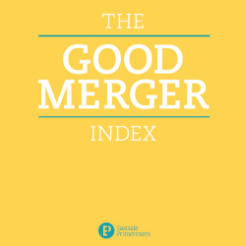Less than 0.01 per cent of charities merged last year but the majority of those that did were driven by financial distress, the 2015 Good Mergers Index has revealed.
Some 53 per cent of merging organisations made losses in the year before their merger, while charities that were subject to the biggest local authority cuts were “merger hotspots”, according to the report by Eastside Primetimers, a consultancy which specialises in sector mergers. They included health and social care charities, which acocunted for 43 per cent of all deals.
The overall number of mergers remained similar to the previous year, with 129 out of a possible 160,000 charities and social enterprises merging between May 2014 and April 2015, the report revealed.
Leisure trusts accounted for three of the ten largest deals, while many infrastructure organisations merged as a means of survival, it said.
Richard Litchfield, chief executive of Eastside Primetimers, said: “While some charity mergers were driven by strategy, the majority were driven by financial distress… which may explain the rise in full takeovers.”
But he said the “relatively low” number of deals was a “surprise, given the scale of the challenges faced by the sector”.
“The environment is becoming brutal and it’s clear the sector needs both more mergers and better mergers. I believe early action could have found a home for the essential services of high-profile charities that failed, such as BeatBullying and Kids Company,” he said.
The report revealed a distinction between charity and housing association mergers – with housing associations taking a more strategic approach with mergers involving groups and subsidiaries.
“There are lessons here for charities, as these arrangements help merging organisations retain their autonomy and identity within a larger structure,” Litchfield said.
Some 129 charities and social enterprises undertook 61 deals during the year, involving the transfer of £110.2m of income.









